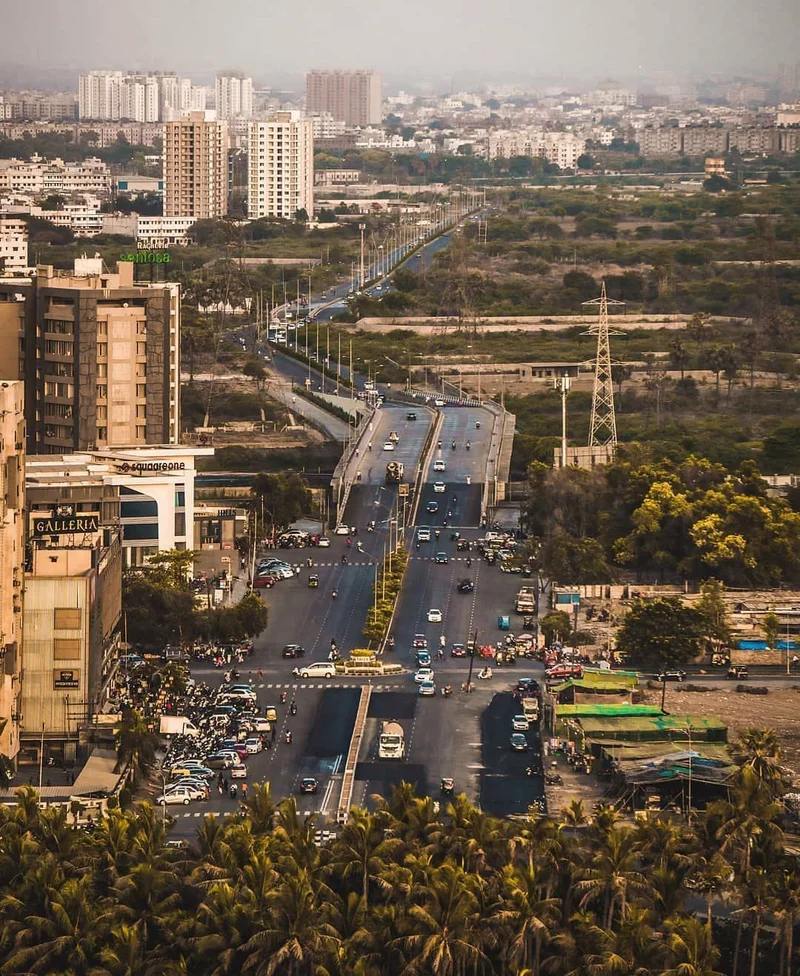Article Directory
The Illusion of Progress: When "Improvements" Deepen the Grind
The headlines scream about progress. An 800-crore redevelopment project. New bridges, flyovers, cement-concrete roads. But in Bharuch-Dahej, India, the reality for over one lakh commuters is a daily descent into peak-hour Mumbai-level traffic hell. That's roughly 100,000 people whose lives are being demonstrably worsened by…progress?
The core issue isn't just the roadwork itself, but the merging of high-speed expressway traffic with local routes. The Vadodara-Bharuch expressway exit funnels vehicles from South Gujarat and Mumbai onto the already strained Bharuch-Dahej road. The National Highways Authority of India (NHAI) claims relief is on the way with the Bharuch-Navsari highway completion, promising to bypass Bharuch. But promises are cheap, especially when they come from government agencies. The crucial question is: what's the timeline?
And this is where the data gets murky. The article offers no firm completion date, only vague assurances. We're left to speculate whether this bypass will be operational in weeks, months, or years. A crucial detail—the project's projected completion date—is conspicuously absent. How can anyone make informed decisions without knowing when this "relief" will actually arrive?
The human cost is quantifiable, even if the article only hints at it. Commuters are losing a minimum of two hours per day. That's 10 hours a week, 40 hours a month—essentially a full work week wasted in traffic. For one lakh people. That's 4 million hours a month vanishing into thin air. And that's just the commute time.

Then there are the secondary effects, the "externalities," as economists like to call them. The article mentions women avoiding drinking water due to the lack of restroom facilities. This isn't just an inconvenience; it's a health risk (dehydration can lead to serious complications). It also speaks volumes about the lack of basic infrastructure planning. Did no one consider the needs of the workforce when designing this "improved" road system?
The Productivity Paradox and the Emergency Factor
The Dahej industrial zone is a Major Accident Hazard (MAH) area. The authorities rightly fear that the current road conditions could impede evacuation or relief operations in case of an industrial emergency. But let's think about this statistically. If the road doubles the time it takes for emergency services to reach an incident, and if the probability of a fatal outcome increases linearly with time (a simplification, of course, but directionally accurate), then the roadwork has effectively doubled the risk of fatalities in the event of an accident.
Sunil Bhatt, president of the Dahej Industries Association (DIA), expresses hope that the repair work will resolve major problems. He also calls for better rail and port connectivity to ease road pressure. This is a classic case of treating the symptoms, not the disease. The fundamental problem isn't just the road; it's the over-reliance on a single transportation artery. Diversifying transport options—rail, waterways—is essential for long-term resilience. But those projects require even more investment and, crucially, even longer timelines.
And here’s a thought leap I have: Who is measuring the total cost of these traffic delays? We see the 800 crore price tag for construction, but what about the lost productivity, the increased health risks, the potential for increased accident severity? No one seems to be factoring these into the equation. It's as if we're building a faster road to nowhere, while simultaneously digging a deeper hole for ourselves. The situation is so bad that the Traffic grind cripples Bharuch-Dahej industrial belt.
Progress? More Like Organized Chaos
The situation in Bharuch-Dahej highlights a critical flaw in our approach to infrastructure development. We focus on the hardware—the roads, the bridges—while neglecting the software—the traffic management, the emergency planning, the human element. The numbers don't lie: a faster road that makes life demonstrably worse is not progress. It's just organized chaos.
